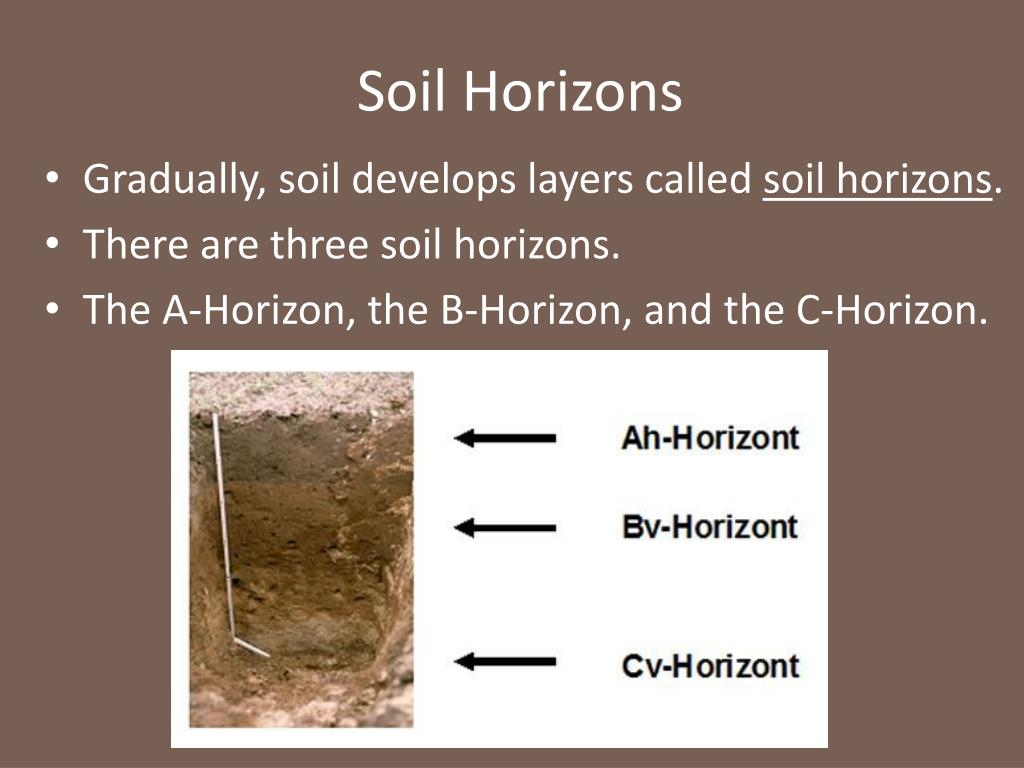

Excavating this horizon generally requires specialized equipment, and roots are usually unable to take advantage of what cracks may be in this layer. It is composed of the parent material that would eventually be transformed into soil. This layer is simply bedrock with minimal to no weathering visible. It is essentially a transitional layer from bedrock to the soil. Subterranean life is far scarcer in this layer, and plant roots do not usually extend here, although it is usually soft enough for root penetration. It is insufficiently weathered to be considered soil, but still considered a layer of a soil profile. The C Horizon, also known as the substratum is unconsolidated material above bedrock. B Horizons are often greatly composed of material illuviated (washed in from) layers above it, mostly clay, iron, aluminum oxides (deposited by elluviated water), and minerals that formed in the layer. The B Horizon is also known as the subsoil. Because of the loss of material through eluviation, it tends to be noticeably lighter than the layers above and below it. Like the O Horizon, this layer is not always present, but when it is, it's usually in forested areas and rarely in grasslands. This name is appropriate because, in this layer clay, iron, and aluminum oxides leach into the lower layers (mostly the B Horizon). The E in "E Horizon" stands for eluviation, another word for leaching. Subterranean life (including microfauna, mesofauna, and macrofauna) tends to be the most abundant in this layer due to the rich, soft, and well-weathered environment of the soil. If this layer has properties of both an A and an E Horizon, it is considered an A Horizon if it is dominated by humidified organic matter. This is a much thicker layer than the O Horizon, dominated by highly weathered mineral particles (the most highly weathered from the parent material of the soil), and typically darker and coarser than other Soil Horizons. The A Horizon is a well-weathered and fertile layer dominated by mineral particles but still rich in organic matter, especially if covered by an O Horizon, which can leach decomposed organic matter into the A Horizon. Microbial activity is high in this layer, utilizing the abundance of organic matter and decomposing it in ways that allow it to contribute to the soil profile. This layer has three well-accepted subordinate horizons: Oi (slightly decomposed organic matter), Oe (moderately decomposed organic matter), and Oa (highly decomposed organic matter). Due to the fact that its presence is determined by external factors (outside of the original parent materials that form soils), it is the only layer not dominated by mineral substances. In more barren locations such as grasslands, an O Horizon is rarer. This horizon is most easily observed in soils that are rarely, if ever, disturbed and with plenty of foliage and/or organisms nearby to contribute to its development, such as forests. The O Horizon is composed of organic material that has accumulated and been modified (physically and chemically) over time, typically from the remains of plant and animals.

Master Horizons are the main layers of a soil profile, described below. 4 Factors Affecting the Formation of Soil Horizons.


 0 kommentar(er)
0 kommentar(er)
